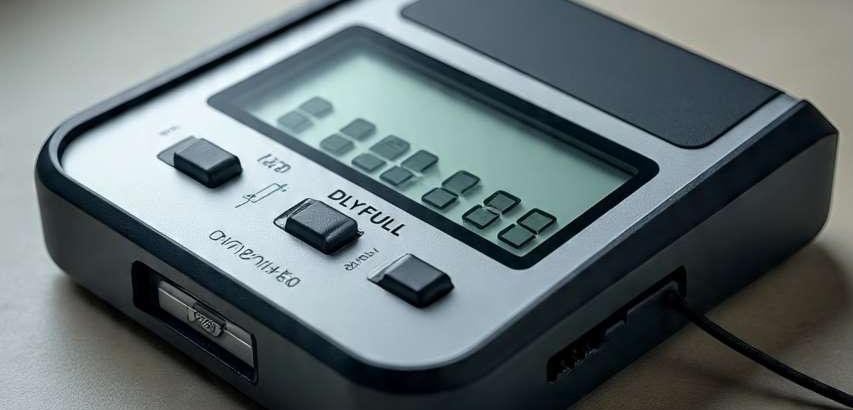A DLYFULL battery tester (the brand name for a common type of tester) is a handheld electronic device designed to measure the health, voltage, and sometimes the internal resistance of a wide variety of batteries. Its primary purpose is to quickly determine if a battery is good, needs recharging, or should be replaced, helping you avoid dead devices and manage your battery inventory efficiently.
What Does It Test?
These testers are remarkably versatile and can typically test:
Common Disposable Batteries: AA, AAA, C, D, 9V (1.5V alkaline and zinc-carbon).
Rechargeable Batteries: Ni-MH (Nickel-Metal Hydride), Ni-Cd (Nickel-Cadmium) versions of AA, AAA, C, D (1.2V).
Button Cell Batteries: Various lithium and alkaline button cells (e.g., CR2032, LR44) used in watches, key fobs, and calculators.
Lithium-Ion/Li-Po Batteries: The rechargeable batteries found in vaping devices (vape pens/e-cigarettes), power banks, RC toys, and some consumer electronics (typically 3.7V nominal). This is a key feature for many users.
Lead-Acid Batteries: Some models can also test 12V automotive, motorcycle, and UPS batteries.
How It Works: The Core Technology
The tester doesn't just measure voltage (which can be misleadingly high even on a weak battery). It applies a small load to the battery and measures the voltage under that load. This "voltage under load" is a much more accurate indicator of the battery's true health and remaining capacity.
Voltage Measurement: Checks the electrical potential of the battery.
Load Test: Applies a small, standardized electrical current to simulate use.
Internal Resistance Measurement (on better models): Measures the battery's opposition to the current flow. A high internal resistance means the battery is failing and can't deliver power effectively, even if the voltage looks okay.
Key Features of a Typical DLYFULL Tester
Feature | Description |
|---|---|
| Digital LCD Display | Shows a clear numerical readout of voltage and a clear status (Good, Weak, Replace). |
Color-Coded Indicators | Green (Good), Yellow/Orange (Weak/Charge), Red (Replace/Bad). Makes interpretation instant. |
Adjustable Contacts | Spring-loaded or sliding contacts to accommodate different battery sizes. |
| Built-in Load Circuit | The essential component that applies the test load for an accurate reading. |
Button Operation | Simple one-button operation to initiate the test. |
How to Use It (Step-by-Step)
Select the Correct Mode: Some advanced testers have a switch or button to select between battery types (e.g., 1.5V Alkaline vs. 3.7V Li-ion). Ensure it's set correctly.
Connect the Battery: Touch the tester's positive (+) red probe to the battery's positive terminal and the negative (-) black probe to the negative terminal.
Press the Test Button: Hold the button for a few seconds. The device will apply the load and take a reading.
Read the Result: Interpret the result:
Voltage Readout: Compare the number to the battery's standard voltage (e.g., 1.5V for alkaline). A fresh alkaline AA should read ~1.6V; below 1.2V is usually dead.
Meter/Gauge: A needle or bar graph will point to a zone (Good, Weak, Replace).
LED Lights: The corresponding color LED will light up.
Pros vs. Cons
✅ Advantages (Pros)
Saves Money: Prevents you from throwing away batteries that still have life and identifies dead ones before they leak and cause damage.
Saves Time & Frustration: Quickly diagnoses if a device isn't working because of a bad battery.
Easy to Use: No technical knowledge required; the color codes make it foolproof.
Versatile: One tool for almost every battery in your house, car, and workshop.
Portable: Small, lightweight, and doesn't require external power.
❌ Limitations (Cons)
Not a Perfect Scientific Instrument: Provides a very good estimate, not a laboratory-grade measurement of capacity (mAh).
Load May Not Be Device-Specific: The applied load is standardized. A battery that tests "Weak" might still work in a low-drain device like a remote control.
Quality Varies: Accuracy can vary between different brands and cheap, no-name models.
Top Applications & Who Needs One
Homeowners: For testing batteries in remotes, toys, flashlights, clocks, and smoke detectors.
Vapers/E-Cigarette Users: Crucial for testing the health and safety of 18650 and other Li-ion vaping batteries.
RC Hobbyists: For testing rechargeable battery packs for drones, cars, and planes.
Technicians & DIYers: For diagnosing issues in electronics projects and devices.
Office IT Departments: For managing batteries in wireless peripherals and UPS backups.
DLYFULL vs. Other Methods
Method | Pros | Cons |
|---|---|---|
| DLYFULL-Style Tester | Fast, cheap, easy, versatile. Good balance of accuracy and convenience. | Doesn't provide exact capacity (mAh). |
| Multimeter | Measures precise voltage. A essential tool for electricians. | Without a load, voltage alone is a poor indicator of battery health. |
| Advanced Capacity Tester | Measures the actual capacity (mAh) by fully discharging the battery. | Expensive, slow (can take hours), and overkill for everyday use. |
Price & Availability
Price Range: Typically very affordable, ranging from $10 to $25 USD.
Where to Buy: Readily available on Amazon, eBay, AliExpress, and at hardware stores.
⚠️ Safety Note: Always test batteries on a non-flammable surface. While rare, a severely damaged or shorted battery can get hot, leak, or in extreme cases, vent. Do not test leaking or physically damaged batteries.
A DLYFULL-style battery tester is an incredibly useful and inexpensive tool for anyone who uses batteries. It takes the guesswork out of battery management, saves you money, and helps you avoid the frustration of a dead device. For its low cost, it's a worthwhile addition to any household junk drawer or toolkit.
 |  |  |
 |  |  |
